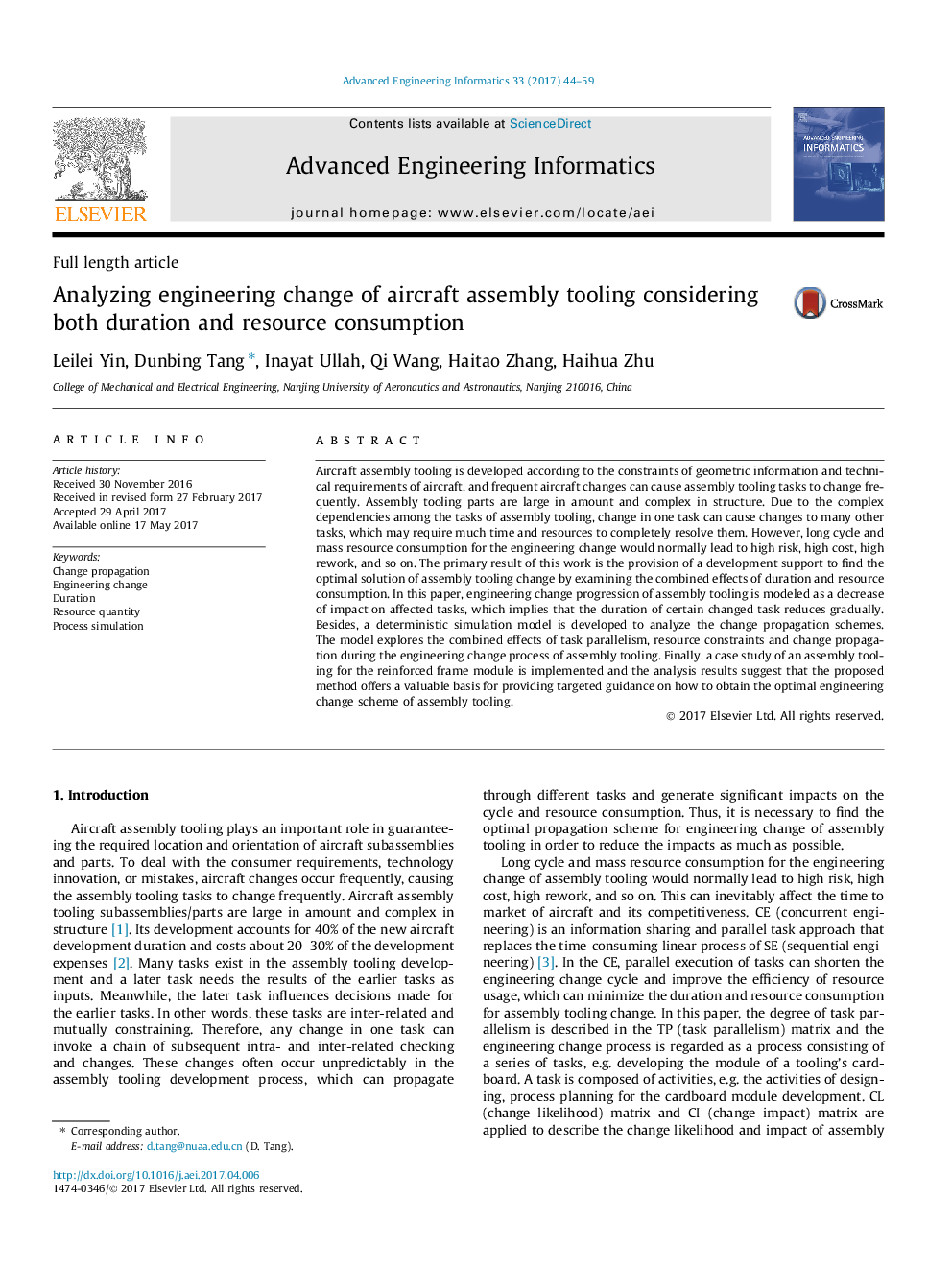| کد مقاله | کد نشریه | سال انتشار | مقاله انگلیسی | نسخه تمام متن |
|---|---|---|---|---|
| 6478347 | 1428036 | 2017 | 16 صفحه PDF | دانلود رایگان |
Aircraft assembly tooling is developed according to the constraints of geometric information and technical requirements of aircraft, and frequent aircraft changes can cause assembly tooling tasks to change frequently. Assembly tooling parts are large in amount and complex in structure. Due to the complex dependencies among the tasks of assembly tooling, change in one task can cause changes to many other tasks, which may require much time and resources to completely resolve them. However, long cycle and mass resource consumption for the engineering change would normally lead to high risk, high cost, high rework, and so on. The primary result of this work is the provision of a development support to find the optimal solution of assembly tooling change by examining the combined effects of duration and resource consumption. In this paper, engineering change progression of assembly tooling is modeled as a decrease of impact on affected tasks, which implies that the duration of certain changed task reduces gradually. Besides, a deterministic simulation model is developed to analyze the change propagation schemes. The model explores the combined effects of task parallelism, resource constraints and change propagation during the engineering change process of assembly tooling. Finally, a case study of an assembly tooling for the reinforced frame module is implemented and the analysis results suggest that the proposed method offers a valuable basis for providing targeted guidance on how to obtain the optimal engineering change scheme of assembly tooling.
Journal: Advanced Engineering Informatics - Volume 33, August 2017, Pages 44-59
